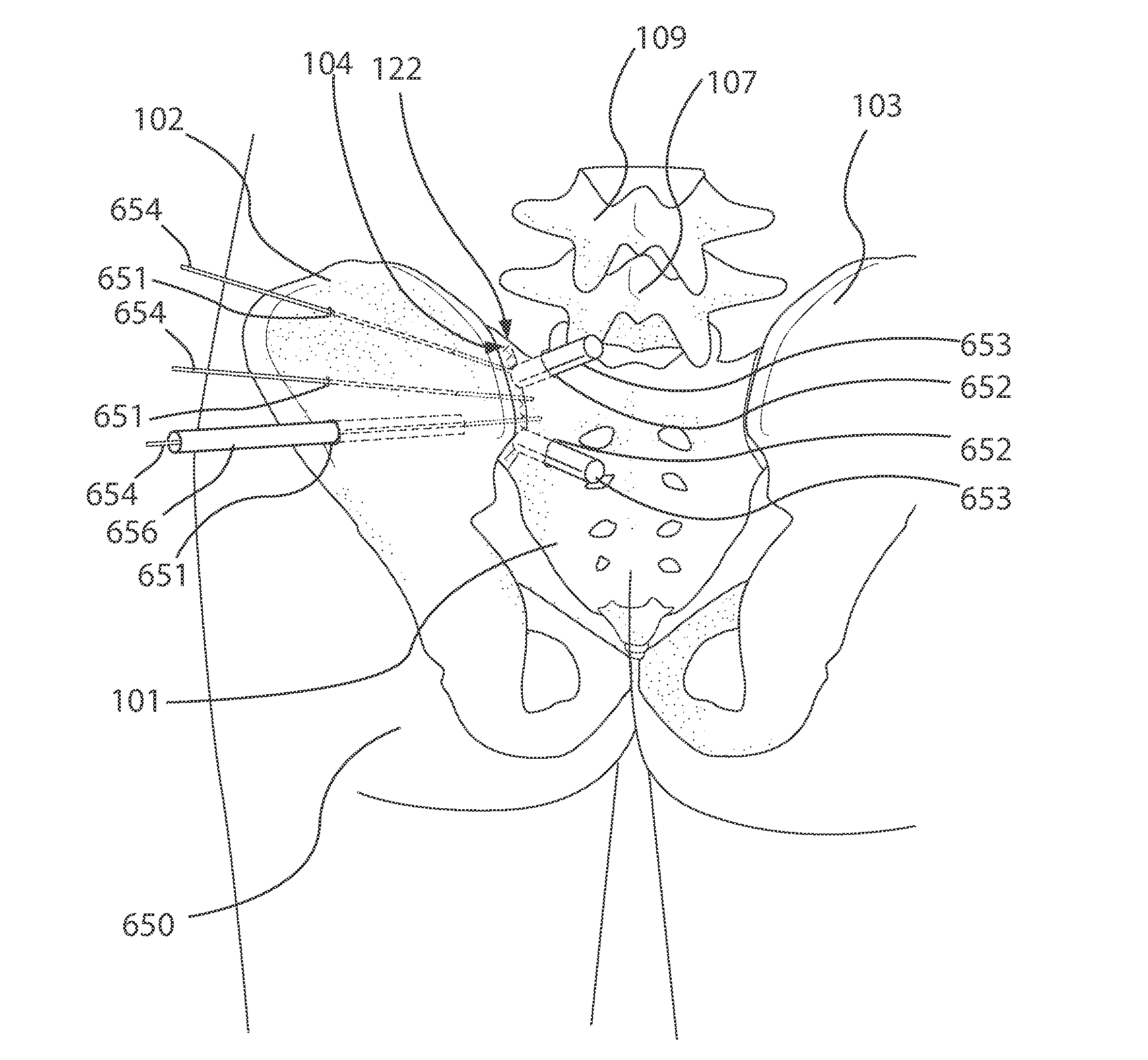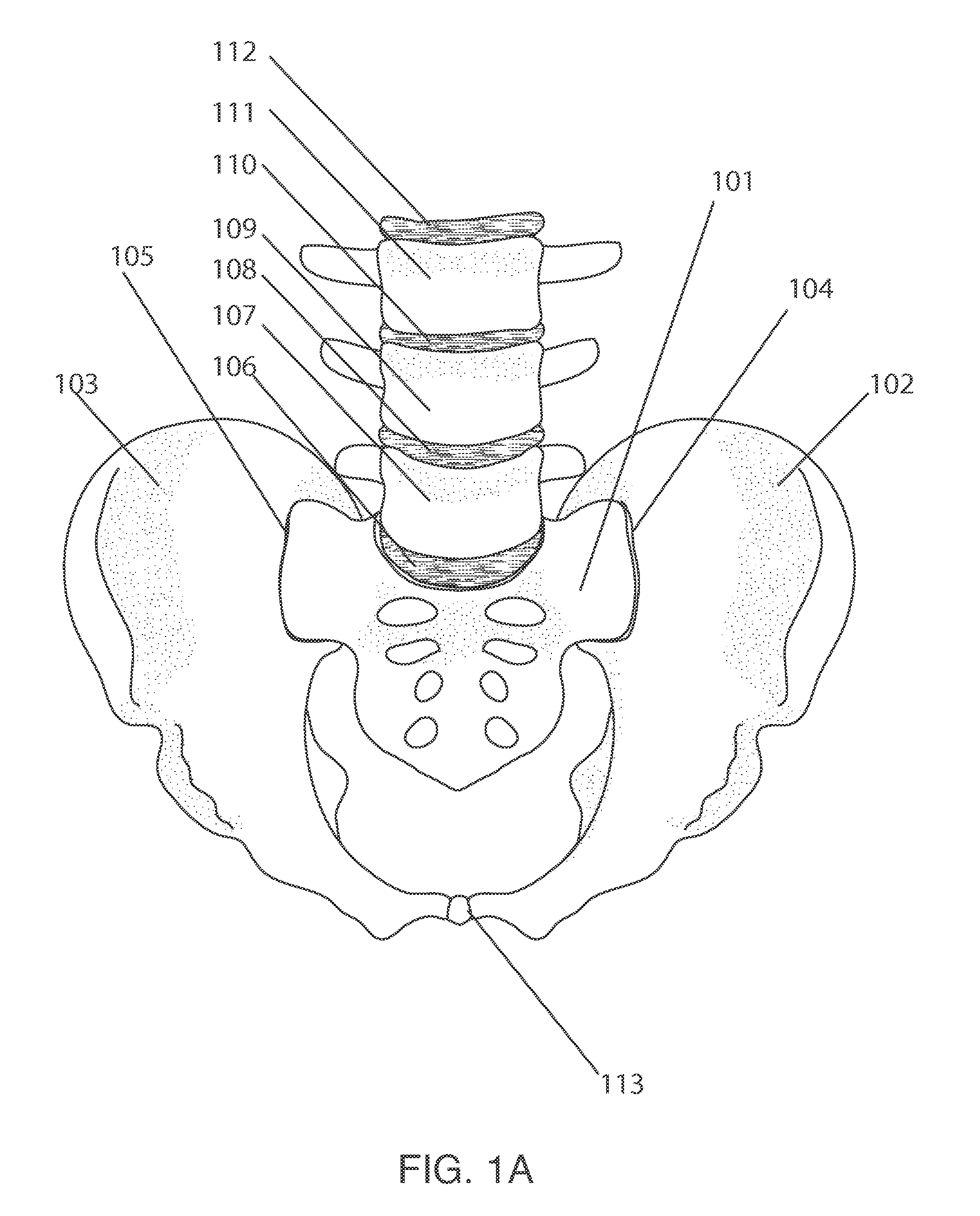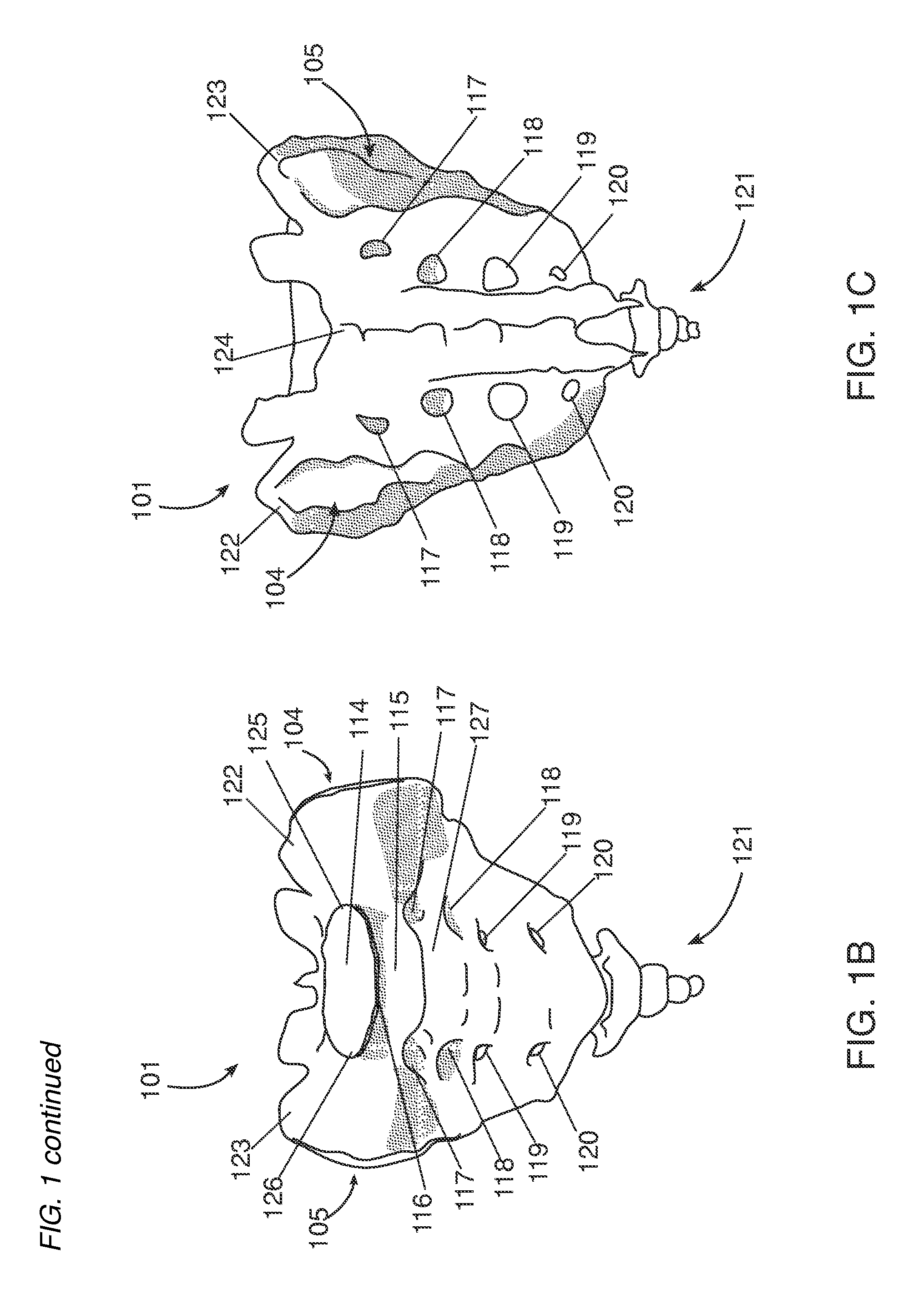Minimally invasive approaches, methods and apparatuses to accomplish sacroiliac fusion
a sacroiliac joint, minimally invasive technology, applied in the field of medical procedures, can solve the problems of no surgical intervention that is adequately and securely fused, and the pain associated with the si joint is common
- Summary
- Abstract
- Description
- Claims
- Application Information
AI Technical Summary
Benefits of technology
Problems solved by technology
Method used
Image
Examples
example 1
[0261]During the secure SI joint with bilateral device step 255, a medical practitioner inserts a bilateral device into the bilateral device path 702, as to secure a left ilium 102, the right ilium 103, and the sacrum 101, and further compressing the left SI joint 104 and the right SI joint 105 as to minimize pain associated with sacroilitis and other afflictions related to a loosened SI joint or SI joints. In certain embodiments, a bilateral device compresses a left ilium, right ilium, and sacrum to ensure that both ilia are secured simultaneously. In certain embodiments of the invention, stabilizer devices further secure individual ilia to the respective side of a sacrum.
[0262]An embodiment of a bilateral device is shown in FIG. 23A, where the bilateral device 2301 further comprises two components. In certain embodiments, a first component 2301a joins with a second component 2301b. In one embodiment of the invention, the first component 2301a is secured to second component 2301b w...
example 2
[0264]In certain embodiments, a bilateral device may have an oblong component that traverses the sacrum. In certain embodiments, a bilateral device may have an oblong component having a feature at one end. In one example, a bilateral device 2500 comprises a component 2502 or 2516, a floating screw 2501, and an end screw 2509, as shown in examples FIG. 25A, FIG. 25B, FIG. 25E, FIG. 25G, and FIG. 2511. In certain embodiments, a component 2502 further has a threaded head 2506 and a shaft 2507, as shown in the example in FIG. 25B. Certain embodiments of an end screw 2509, as shown in the example in FIG. 25E, fastens a floating screw 2501 to a female thread 2505 located on one end of a component 2502, 2516, as shown in an example in FIG. 25C, FIG. 25D, and FIG. 25G. A floating screw 2501, as shown in FIG. 25F, may also have drive 2514 that can allow axial rotation of such screw 2501 with a driver as well as accommodating a diameter of an end screw head 2512, and further have an smaller d...
example 3
[0268]In certain embodiments, a bilateral device comprises an oblong component, which can have features fastened, attached, threaded, fitted, on both sides of such component. In certain embodiments, a bilateral device 2520 comprises a component 2521 having an oblong shape, as shown in an example in FIG. 6A, FIG. 26B, further having threads 2523 (shown for example in FIG. 25D) on both ends. In certain embodiments a shaft region, for example, shaft 2527 (also, for example, on component 2541) comprises a spline 2524 running in a longitudinal direction, as shown in for example, FIG. 26C. A plurality of splines 2524 may be arranged circumferentially along such shaft, forming one or more grooves 2525, as shown in example FIG. 26C, FIG. 30C. Certain embodiments of a component has an axial opening 2526 or 2574, as shown in example FIG. 26C or FIG. 31G, that allows a medical practitioner to slide a component over, for example, a guide wire.
[0269]In certain embodiments, a wedge end screw 2522...
PUM
 Login to View More
Login to View More Abstract
Description
Claims
Application Information
 Login to View More
Login to View More - R&D
- Intellectual Property
- Life Sciences
- Materials
- Tech Scout
- Unparalleled Data Quality
- Higher Quality Content
- 60% Fewer Hallucinations
Browse by: Latest US Patents, China's latest patents, Technical Efficacy Thesaurus, Application Domain, Technology Topic, Popular Technical Reports.
© 2025 PatSnap. All rights reserved.Legal|Privacy policy|Modern Slavery Act Transparency Statement|Sitemap|About US| Contact US: help@patsnap.com



